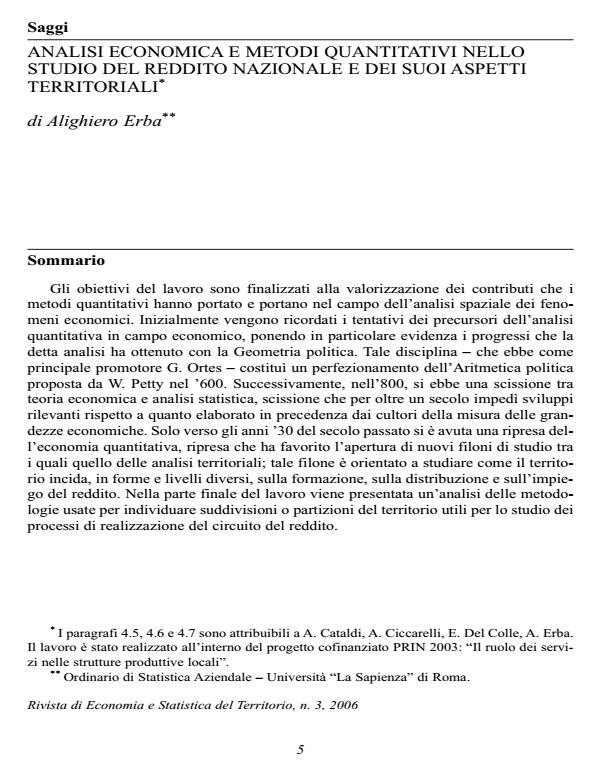Analisi economica e metodi quantitativi nello studio del reddito nazionale e dei suoi aspetti territoriali
Journal title RIVISTA DI ECONOMIA E STATISTICA DEL TERRITORIO
Author/s Alighiero Erba
Publishing Year 2007 Issue 2006/3
Language Italian Pages 32 P. 5-36 File size 233 KB
DOI
DOI is like a bar code for intellectual property: to have more infomation
click here
Below, you can see the article first page
If you want to buy this article in PDF format, you can do it, following the instructions to buy download credits

FrancoAngeli is member of Publishers International Linking Association, Inc (PILA), a not-for-profit association which run the CrossRef service enabling links to and from online scholarly content.
Aim of the paper is to enhance the importance of quantitative methods in the spatial analysis of economic phenomena. The first steps in the development of quantitative analysis, especially promoted by the so called Political Geometry, are mulled over. This theory, which flourished under the boost of G. Ortes, can be considered an improvement of the Political Arithmetic proposed by W. Petty in the XVII century. In the XIX century, there was a clear split between economic theory and statistica analysis. This differentiation determined a halt in the development of quantitative measurements of economic events. Only in the thirties of the last century has there been a renewed interest in quantitative economics that has given rise to the exploration of new streams of research, especially at regional level. This piece of research is oriented to investigate how the space was inter-related with income formation, its distribution and its use. In the last section of the paper, a survey on the methodologies used to identify regional partitions useful for studying income circuit is presented.
Alighiero Erba, Analisi economica e metodi quantitativi nello studio del reddito nazionale e dei suoi aspetti territoriali in "RIVISTA DI ECONOMIA E STATISTICA DEL TERRITORIO" 3/2006, pp 5-36, DOI: